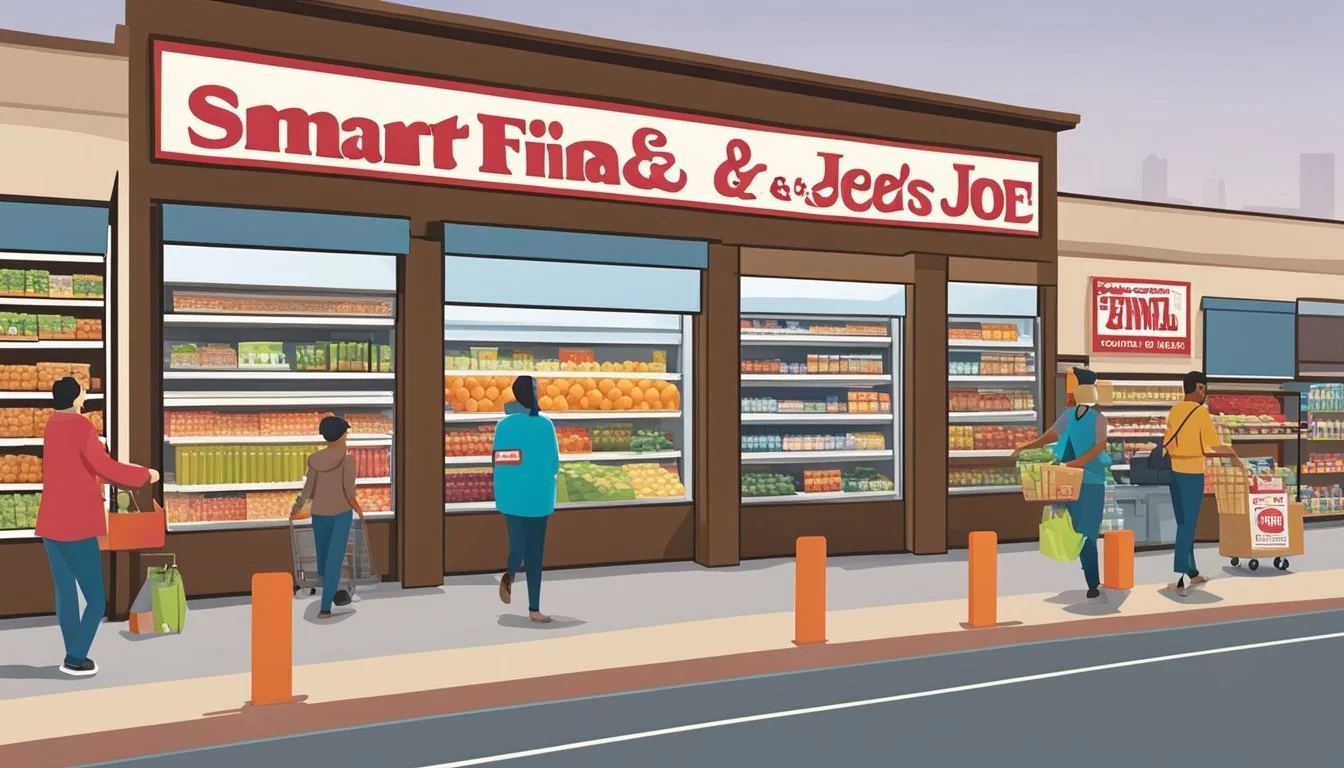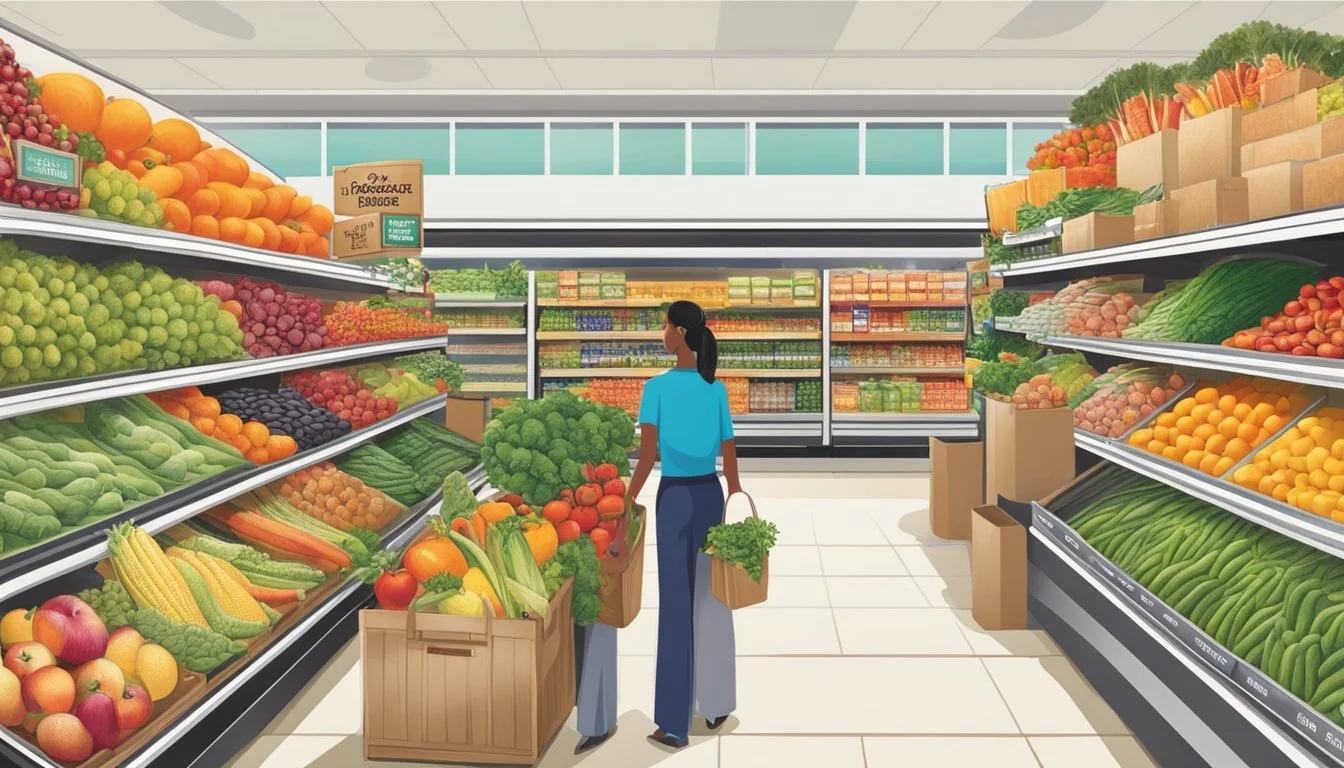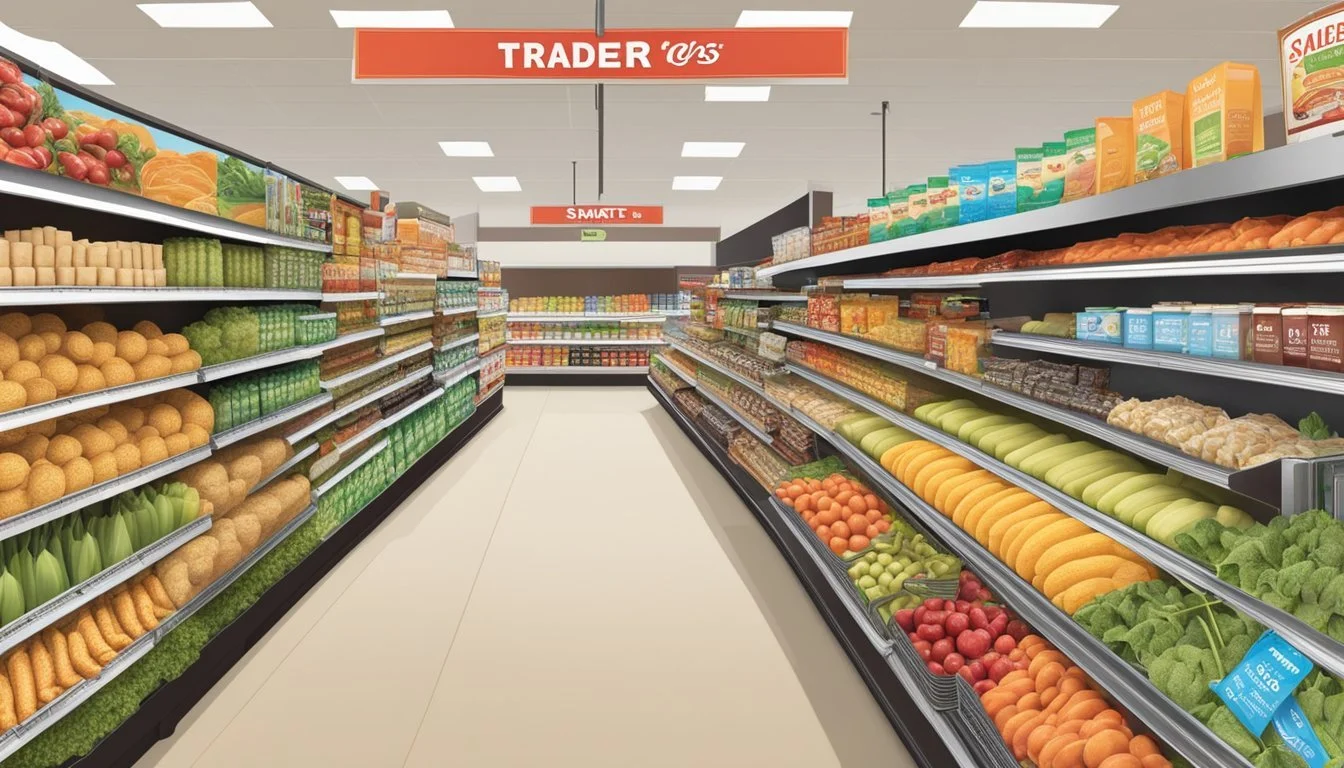Smart & Final vs Trader Joe's
A Comprehensive Comparison of Price, Quality, and Selection
Grocery shopping can be a significant expense for many households, making the choice of where to shop an important decision. Smart & Final and Trader Joe's are two popular supermarket chains that offer distinct shopping experiences and product selections.
When comparing prices, Trader Joe's generally comes out ahead, with prices typically 10% to 20% lower than average supermarket prices. Smart & Final, while not as consistently low-priced as Trader Joe's, still offers competitive pricing, coming in at about 14% below average grocery store prices in some regions.
Beyond price, these two grocery stores differ in their product offerings and overall shopping atmosphere. Trader Joe's is known for its unique private-label products and smaller store format, while Smart & Final caters to both households and businesses with a broader range of products, including bulk items. The choice between these two supermarkets often depends on individual shopping needs and preferences.
History and Background
Smart & Final and Trader Joe's have distinct origins that shaped their growth into popular grocery chains. Both started small and expanded over decades to become household names, each with a unique approach to serving customers.
Smart & Final's Growth
Smart & Final began in 1871 as Hellman, Haas Grocery Company in Los Angeles. The company changed hands and names over the years, becoming Smart & Final Iris Company in 1914. It pioneered the warehouse store concept, catering to both businesses and families.
Smart & Final expanded steadily across California and the Western U.S. In the 1980s, it introduced its own private label products. The chain weathered economic ups and downs, adapting its model to meet changing consumer needs.
By the 2000s, Smart & Final had over 300 stores. It continued to evolve, launching new store formats to serve different market segments.
Trader Joe's Evolution
Trader Joe's started in 1958 as Pronto Markets, a chain of convenience stores in the Los Angeles area. In 1967, founder Joe Coulombe transformed the concept into Trader Joe's, focusing on unique, high-quality products at affordable prices.
The first Trader Joe's store opened in Pasadena, California. It quickly gained popularity for its tropical theme, friendly staff, and innovative product selection. The chain expanded slowly but steadily, maintaining its quirky character.
In 1979, Trader Joe's was acquired by the Albrecht family, owners of Aldi Nord. This partnership fueled further growth while preserving the company's distinctive culture. Trader Joe's expanded beyond California in the 1990s, becoming a national brand known for its curated selection and private label offerings.
Store Branding and Positioning
Smart & Final and Trader Joe's have distinct approaches to branding and market positioning. These strategies shape customer perceptions and loyalty.
Smart & Final's Market Approach
Smart & Final positions itself as a no-frills warehouse-style store catering to both households and small businesses. Its brand emphasizes bulk purchasing and value pricing.
The store's layout reflects this approach, with wide aisles and pallet displays. Smart & Final's store brand, First Street, offers affordable alternatives to national brands across various product categories.
Smart & Final's marketing focuses on savings and convenience for budget-conscious shoppers. The company targets price-sensitive consumers and small business owners looking for wholesale quantities without membership fees.
Trader Joe's Brand Image
Trader Joe's has cultivated a unique brand image centered on discovery and affordability. The store's nautical theme and friendly staff create a distinct shopping experience.
Trader Joe's emphasizes its private label products, which make up about 80% of its inventory. These items often feature quirky names and packaging, reinforcing the brand's playful image.
The company has built a loyal following through its curated selection of unique, often international-inspired products. Trader Joe's limits its stock to around 4,000 items, compared to 50,000 in typical supermarkets.
Trader Joe's eschews traditional advertising, relying instead on word-of-mouth and its Fearless Flyer newsletter. This approach has helped create a sense of insider knowledge among customers.
Product Selection and Quality
Smart & Final and Trader Joe's offer distinct product selections tailored to different customer needs. Each store has its own strengths in terms of variety and quality.
Variety of Products at Smart & Final
Smart & Final provides a wide range of products catering to both household and business customers. The store offers bulk items, making it ideal for large families or small businesses. Their selection includes fresh produce, meats, and dairy products. Smart & Final also stocks a variety of pantry staples, cleaning supplies, and paper goods.
The store carries both name-brand and private-label products, giving customers options at different price points. Smart & Final's meat department features various cuts and package sizes to accommodate different needs. Their produce section offers a mix of conventional and organic options.
Quality and Uniqueness at Trader Joe's
Trader Joe's is known for its curated selection of high-quality, unique products. The store focuses on private-label items, many of which are organic or all-natural. Trader Joe's constantly introduces new and innovative products, keeping their selection fresh and exciting.
The produce department at Trader Joe's offers a range of fresh fruits and vegetables, with an emphasis on organic options. Their cheese selection is particularly notable, featuring both domestic and imported varieties. Trader Joe's also excels in providing ready-to-eat meals and frozen foods with creative flavor combinations.
Trader Joe's prioritizes quality over quantity, carefully selecting products that meet their standards. This approach results in a more limited but carefully curated selection compared to larger supermarkets.
Pricing and Value for Consumers
Price comparisons between Smart & Final and Trader Joe's reveal notable differences in cost and value for shoppers. Understanding these distinctions can help consumers make informed decisions and maximize savings.
Comparing Prices Across Chains
Smart & Final offers prices approximately 14% lower than the average grocery store. This significant discount can result in substantial savings for regular shoppers. Trader Joe's typically provides prices 10% to 20% below average, positioning it competitively in the market.
A family spending $250 weekly on groceries could save $35 to $50 at Smart & Final or Trader Joe's compared to shopping at higher-priced chains. Certain product categories show more pronounced price gaps. Spices, nuts, seeds, oils, and freezer items often cost less at Trader Joe's.
Saving Strategies in Grocery Shopping
Smart shoppers can maximize value by strategically purchasing from both stores. Buy bulk items and household staples at Smart & Final to take advantage of their discounts on larger quantities. For unique, high-quality private label products, Trader Joe's offers excellent value.
Compare prices on fresh produce, as these can vary. Smart & Final may have better deals on conventional fruits and vegetables, while Trader Joe's might offer competitive prices on organic options. Look for weekly specials and seasonal promotions at both stores to boost savings.
Consider store-brand products, which are often cheaper than national brands. Both chains excel in this area, with Trader Joe's known for its extensive private label selection and Smart & Final offering its First Street brand at competitive prices.
Shopping Experience and Service
Smart & Final and Trader Joe's offer distinct shopping experiences, each with its own approach to customer service and store atmosphere. Their checkout processes and employee interactions shape how customers perceive and engage with these grocery stores.
Checkout Process at Stores
Smart & Final typically features larger carts and wider aisles to accommodate bulk purchases. Their checkout lanes are designed for efficiency, often equipped with conveyor belts and multiple payment options. Self-checkout kiosks are available in many locations, reducing wait times during busy periods.
Trader Joe's takes a different approach. Their stores have smaller footprints and narrower aisles. Checkout lines can be longer, especially during peak hours. However, they compensate with a unique bell system. Employees ring bells to signal for additional cashiers when lines grow, ensuring a smoother flow.
Customer Service and Employee Satisfaction
Smart & Final employees are generally knowledgeable about product locations and bulk purchasing. They offer assistance with loading large items and provide information on business accounts for frequent shoppers.
Trader Joe's is renowned for its friendly, engaged staff. Employees wear Hawaiian shirts, creating a casual atmosphere. They're often praised for their product knowledge and enthusiasm. Trader Joe's invests heavily in employee training and satisfaction, which translates to positive customer interactions.
Both stores prioritize customer service, but Trader Joe's stands out for its unique culture and personalized approach. Smart & Final focuses more on efficiency and meeting the needs of both individual and business customers.
Grocery Store Accessibility and Convenience
Smart & Final and Trader Joe's differ in their approaches to accessibility and convenience. Each retailer has unique strengths and limitations in store locations and digital shopping options.
Location and Store Availability
Smart & Final operates over 250 stores across the western United States. These stores are often located in urban and suburban areas, providing easy access for many shoppers. Smart & Final stores tend to be larger, warehouse-style locations with ample parking.
Trader Joe's has over 500 stores nationwide, with a strong presence in major cities and affluent suburbs. Their stores are typically smaller and may have limited parking in some urban locations. Trader Joe's strategic placement often targets areas with higher foot traffic.
Both chains continue to expand, but Trader Joe's has shown faster growth in recent years. This expansion has improved accessibility for many consumers seeking their unique product offerings.
Grocery Delivery and Online Options
Smart & Final embraces digital shopping trends. The company offers online ordering and delivery through its website and mobile app. Customers can choose same-day delivery or in-store pickup options at most locations.
Smart & Final also partners with third-party delivery services like Instacart, expanding its reach. This flexibility caters to consumers who prioritize convenience and time-saving options.
Trader Joe's takes a different approach. The company does not offer its own delivery service or online ordering system. Trader Joe's focuses on in-store experiences and does not work with major grocery delivery platforms.
Some third-party services may offer unofficial Trader Joe's delivery in certain areas, but selection and availability can be limited. This lack of official delivery options may inconvenience customers who prefer online shopping.
Retail Ecosystem and Competitive Analysis
Smart & Final and Trader Joe's operate in a dynamic grocery landscape shaped by evolving consumer preferences and industry trends. Their strategies and positioning differ significantly, influencing their market presence and appeal to shoppers.
Comparing Chain Strategies
Smart & Final focuses on a warehouse-style format, offering bulk items and catering to both retail and business customers. Its stores average 25,000-30,000 square feet, larger than Trader Joe's compact 10,000-15,000 square foot layouts. Trader Joe's emphasizes unique, private-label products and a curated selection.
Smart & Final stocks around 8,000-10,000 SKUs, while Trader Joe's keeps its inventory tight at 2,000-3,000 items. This lean approach allows Trader Joe's to maintain lower prices and faster inventory turnover.
Trader Joe's targets urban, educated consumers with higher incomes. A typical Trader Joe's location has 250,000 people within a 5-mile radius, $91,000 average household income, and 50% of adults holding bachelor's degrees or higher.
Industry Trends and Consumer Preferences
E-commerce is reshaping grocery retail, though its impact varies by chain. Smart & Final has embraced online ordering and delivery services. Trader Joe's has resisted this trend, focusing on in-store experiences.
Health-conscious and organic offerings continue to grow in importance. Both chains have expanded their natural and organic selections, with Trader Joe's particularly known for its affordable organic options.
Private labels are gaining market share. Trader Joe's excels in this area, with over 80% of its products under its own brand. Smart & Final has increased its private label presence but maintains a mix of national brands and its own lines.
Warehouse clubs like Costco compete with Smart & Final's bulk offerings, while specialty grocers and conventional supermarkets vie for Trader Joe's customers. Walmart and Target have expanded their grocery departments, intensifying competition across the sector.
Sustainability and Ethical Practices
Smart & Final and Trader Joe's have distinct approaches to environmental responsibility and supplier relationships. Both stores aim to balance sustainability with affordability, but their strategies differ in key areas.
Environmental Responsibility
Smart & Final focuses on reducing waste and energy consumption in its stores. The company has implemented LED lighting and energy-efficient refrigeration systems. They offer reusable bags and encourage customers to bring their own.
Trader Joe's has made strides in packaging reduction. The chain eliminated single-use plastic bags in 2019 and aims to cut 1 million pounds of plastic from its stores annually. They've also increased the use of renewable materials in product packaging.
Both stores have room for improvement in their produce sections. While they offer loose fruits and vegetables, pre-packaged items remain common. Smart & Final tends to have more bulk options, potentially reducing packaging waste.
Sourcing and Supplier Relationships
Smart & Final works with a mix of large distributors and local growers. They prioritize California-grown produce when possible, supporting regional farmers. The company has relationships with long-standing vendors but provides limited information about specific sourcing practices.
Trader Joe's is known for its unique private-label products. They work directly with manufacturers to create exclusive items. The chain has faced criticism for a lack of transparency in its supply chain. However, they've made efforts to improve, publishing a list of countries they source from and increasing communication about product origins.
Both stores have taken steps to ensure ethical sourcing. Smart & Final participates in industry initiatives to promote fair labor practices. Trader Joe's has committed to eliminating artificial preservatives and GMOs from its products, appealing to health-conscious consumers.
Conclusion and Recommendations
Smart & Final and Trader Joe's each offer unique advantages for grocery shoppers. Smart & Final excels in bulk purchases and household essentials, making it ideal for large families or those who prefer to stock up.
Trader Joe's shines with its curated selection of specialty items and private label products. Its smaller store format creates a more intimate shopping experience.
For everyday grocery items, Smart & Final often provides competitive prices, especially on larger quantities. Trader Joe's, however, frequently offers better deals on organic and gourmet options.
Consumers should consider their specific needs when choosing between these stores. Families may find Smart & Final's bulk offerings more economical. Those seeking unique flavors and health-conscious options might prefer Trader Joe's.
A strategic approach could involve splitting shopping between both stores. This allows consumers to take advantage of Smart & Final's bulk pricing on staples while enjoying Trader Joe's specialty items.
Ultimately, the best choice depends on individual preferences, budget constraints, and shopping habits. Both stores have their merits, and many shoppers find value in incorporating both into their grocery routines.











